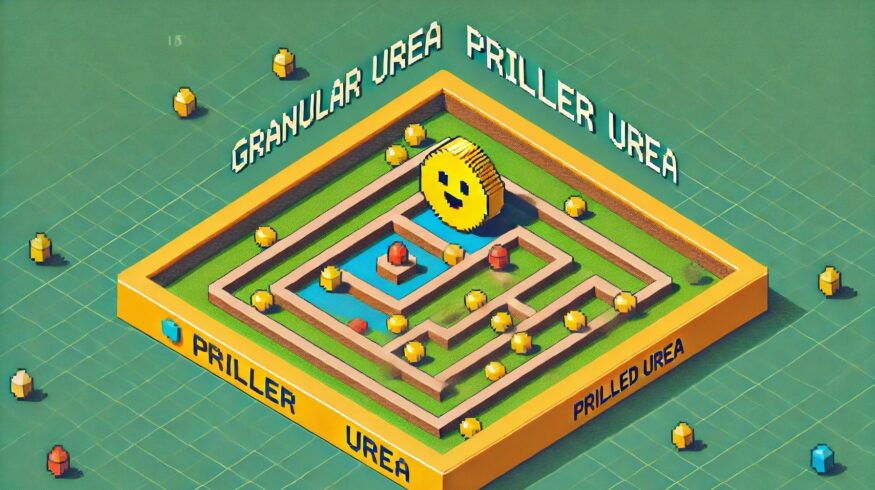Friday’s Insider: Granular Urea vs. Prilled Urea

When I joined an international trading company in 2005, I began discovering the intricate demands of final markets, particularly in the agricultural sector. At that time, Brazil was already one of the largest consumers of urea globally, consuming millions of metric tons annually. However, the market was dominated by prilled urea, which accounted for most of the country’s imports. In those days, prilled urea constituted approximately 70-80% of Brazil’s total urea imports. Those days are now gone. Today, the landscape has drastically shifted, with around 95% of Brazil’s urea imports consisting of granular urea. This trend is not isolated to Brazil; the same shift has occurred in the United States, across Europe, and in many other regions worldwide, reflecting a global transformation in agricultural practices and fertilizer preferences.
So, why has granular urea become more widely used than prilled urea in the last 15–20 years? The primary reason for this shift lies in advancements in agricultural practices and farmers’ evolving needs. Granular urea offers several distinct advantages that have driven this change, making it the preferred choice for modern farming across various geographies.
Firstly, granular urea is physically larger and more uniform in size compared to prilled urea. Prilled urea typically has smaller, less uniform particles, which can pose challenges in mechanical handling and application. The uniformity of granular urea allows for more precise application using modern spreading equipment. This precision is crucial in large-scale farming operations, where efficiency and accuracy can significantly impact crop yields. Studies have shown that uneven fertilizer application can reduce crop yields by up to 15%, highlighting the importance of uniform distribution.
Additionally, granular urea is more resistant to environmental factors, such as wind and moisture, than prilled urea. The larger, denser granules of granular urea are less likely to be blown away by wind or to absorb moisture from the air, which can cause caking or premature dissolution before application. This stability ensures that the fertilizer remains effective until it reaches the soil, reducing waste and improving overall crop yield. For instance, research has indicated that granular urea can reduce nitrogen losses by up to 20% compared to prilled urea, leading to more efficient fertilizer use.
Another significant advantage of granular urea is its compatibility with other types of fertilizers in blended applications. Farmers often use customized blends of different nutrients tailored to specific crop needs, and the uniform size and density of granular urea allow for better mixing with other fertilizer components. This compatibility is key in precision agriculture, where delivering the proper nutrients at the right time is essential for optimizing crop production. Blended fertilizers, which may include components like potash or phosphates, work best when all elements have similar physical properties, ensuring even application across fields.
Furthermore, granular urea generally has a slower release rate compared to prilled urea. This slower release helps reduce nitrogen volatilization, where nitrogen is lost to the atmosphere as ammonia gas before the soil can absorb it. Nitrogen volatilization can result in significant nutrient losses, sometimes up to 40% of the applied nitrogen, which decreases the fertilizer’s efficiency and contributes to environmental pollution. By reducing volatilization, granular urea ensures that more of the applied nitrogen is available for plant uptake, improving the efficiency of fertilizer use and reducing the environmental impact.
As global agriculture has evolved, there has been an increasing demand for fertilizers that support large-scale, intensive farming practices. Fertiliser manufacturers have responded by increasingly producing granular urea to meet this demand. The adoption of mechanized farming techniques in more regions has further highlighted the advantages of granular urea over prilled urea, driving the shift in usage. Today, the global production of granular urea has surpassed that of prilled urea, with the former now representing over 60% of the total urea market.
To summarise, as I have mentioned in my previous post, education and more sophisticated farming operations have been critical to these developments. The shift from prilled to granular urea reflects the broader changes in agricultural practices, where precision, efficiency, and sustainability have become paramount. As the global population continues to grow and the demand for food increases, the importance of using advanced, efficient fertilizers like granular urea will only become more pronounced.
————
About the Author of “Friday’s Insider”: Ilya Motorygin is the co-founder of GG-Trading and brings 30 years of experience to the fertilizer industry. Renowned for his comprehensive problem-solving skills, Ilya expertly manages deals from inception to completion, overseeing aspects such as financing, supply chains, and logistics.
Enjoyed this story?
Every Monday, our subscribers get their hands on a digest of the most trending agriculture news. You can join them too!












Discussion0 comments